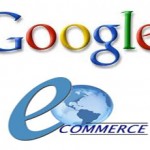
Los Angeles — Designing software powerhouse Adobe Systems Inc. keeping up on its promise to support both its proprietary Flash and AIR technologies as well as Web standards such as HTML5, is finally adopting a tried and tested method to make up for lost time, Adobe on Monday announced that it has inked an agreement with Nitobi Software, a privately held company, commonly known for its products such as PhoneGap and TypeKit, to give it more strength in a fast-moving area where it is playing catch-up.
For long Adobe promoted its Flash Player technology for advanced Web design, but acquiring these two companies is a pretty strategic move on the part Adobe, as the move will now empower the software giant better Web standards including HTML, CSS, and JavaScript.
Now, in conjunction with its Adobe Max developer and designer conference populated with the very people wrestling with that transition, the company made a bold, decisive move on the HTML5 and mobile front in announcing the two acquisitions Nitobi Software, the creator of the popular PhoneGap cross-platform mobile application development environment.
PhoneGap is a massively popular open-source programming platform which delivers tools for creating Web apps that run on a variety of mobile phones. That aligns well with the cross-platform approach Adobe has favored with Flash: give programmers the ability to create what they want, and let the tools worry about the differences from one system to another.
Adobe is looking at the PhoneGap HTML5 application platform to accelerate the creative tools giant’s HTML5 and Web standards strategy—which, the company says, will run in parallel with its strategy to continue to evolve and innovate around the Flash platform and Adobe AIR.
The move to acquire Nitobi strengthens Adobe’s commitment to helping customers be even more expressive, regardless of the technology, David Wadhwani, senior vice president and general manager of Adobe’s Digital Media Business Unit, said at a Q&A session with press and analysts. However, the agreement is also in conjunction with recent product releases such as Adobe Edge and Adobe Muse, as well as the innovation with community-driven projects, including contributions to the jQuery mobile UI framework and Webkit for layout and typography functionality, he said.
Furthermore, PhoneGap’s open-source platform has been downloaded more than 600,000 times to date and thousands of applications has been developed using PhoneGap are available in mobile application stores that span devices based on Android, iOS, BlackBerry and other operating systems.
“PhoneGap has proven to be an industry-defining app solution for HTML5 developers,” Danny Winokur, vice president and general manager of platform at Adobe, said in a statement. “PhoneGap is an impressive solution for developing a broad range of mobile apps using the latest Web standards, and is already integrated with Dreamweaver CS5.5. It is a perfect complement to Adobe’s broad family of developer solutions, including Adobe AIR, and will allow us to continue to provide content publishers and developers with the best, cutting-edge solutions for creating innovative applications across platforms and devices.”
“Adobe has always been a big advocate of the open-source community and at the forefront of enabling rich, Web based applications across screens,” Andre Charland, CEO of Nitobi, said in a statement. “We share the same philosophy about enabling extraordinary mobile and Web applications. Becoming part of the Adobe family with its industry-leading tools and technologies opens up amazing new opportunities for PhoneGap and our customers.”
Typekit on the other hand, is in a different sphere, Web-based typography, which offers subscriptions to those who want to use sophisticated fonts on the Web with new abilities in CSS (Cascading Style Sheets). Adobe is among those that distributes its fonts in this way. This is something Adobe is all too familiar with and it voiced its thoughts on both acquisitions.
Casting a little light on the company’s purchase of Typekit, Lea Hickman, vice president of product management at Adobe, had this to offer in a statement from a release:
Typography is a essential design element and something that designers want to be more creative with on websites — especially as these websites now need to be viewed on mobile devices. Working closely with type makers, the Typekit team has delivered an outstanding service, empowering designers to present the power of the printed word in new ways — online and on devices.
Adobe already licensed fonts to those who would employ them in magazines and the like, but that business must adjust to the online generation, where companies do not necessarily have the rights to distribute digital versions of the fonts. Among TypeKit’s 250,000 customers are The New York Times and Condé Nast. Prices are higher for Web sites that have big audiences.
In fact, CSS and the related WOFF (Web Open Font Format) technology distribute digital fonts for rendering in a browser, an approach that can save download times and enhance the flexibility for display on everything from smartphones to big-screen TVs when compared to baking words into graphical PNG or JPEG images.
Lastly, the next task will be of consolidating the new brands into Adobe’s software and services and trying to expand from their early-adopter customers to Adobe’s more mainstream buyers.


